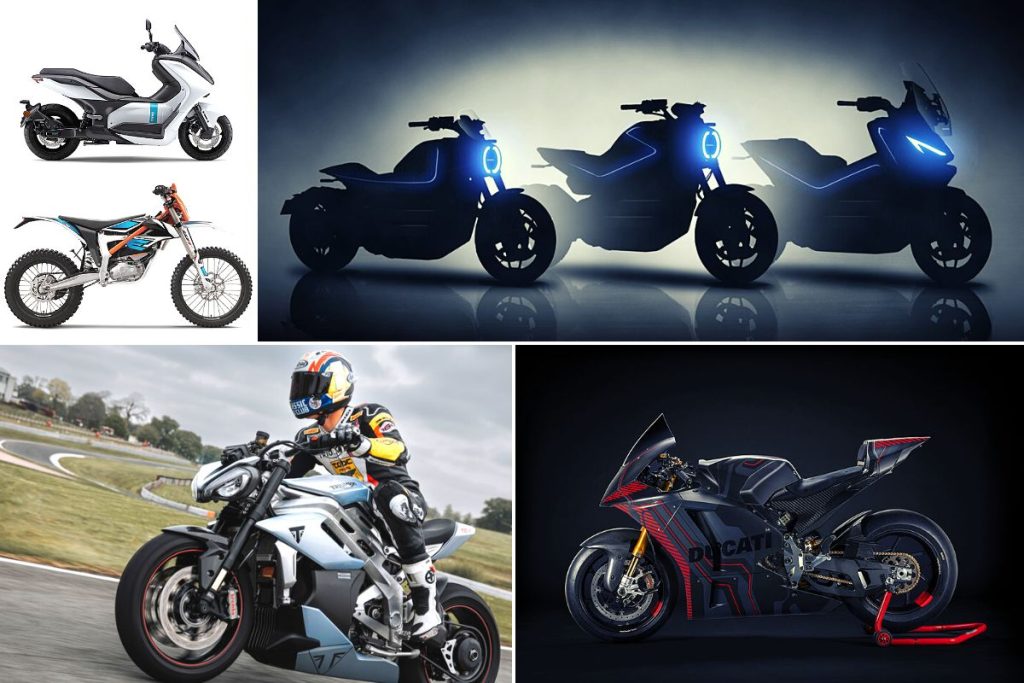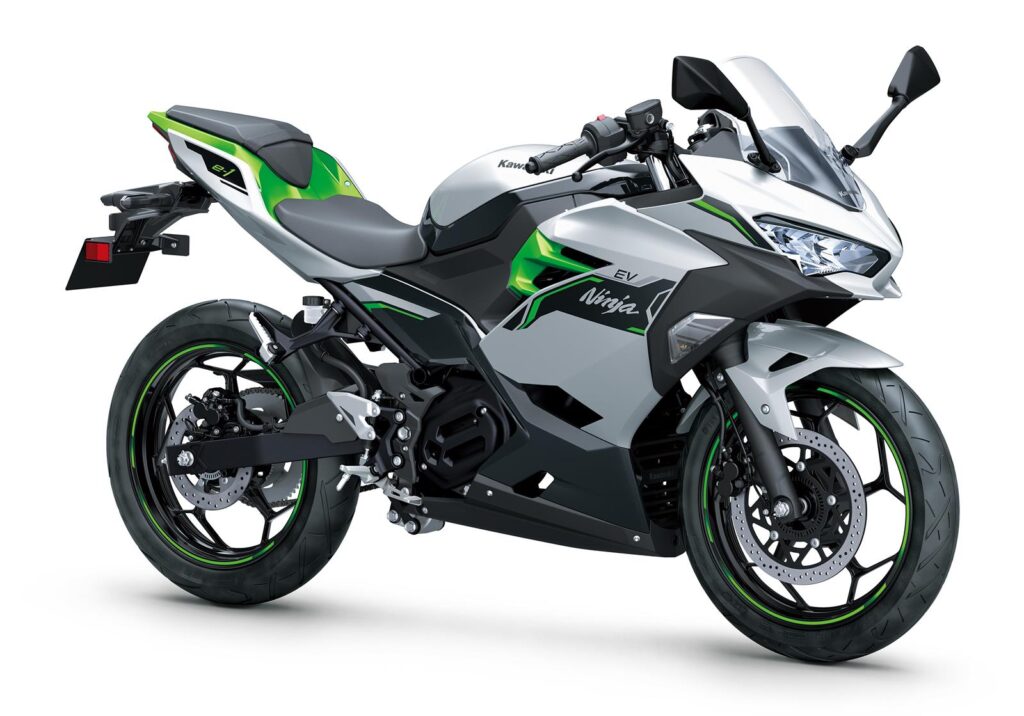
Kawasaki, after seventy years in the motorcycle sector with combustion motorcycles, announces a new era, presenting two electric motorcycles: the Ninja e-1 and Z e-1
Kawasaki officially presents its first electric motorcycles: the Ninja e-1 and Z e-1. At Intermot 2022 first and at Eicma afterwards, Kawasaki presented the prototype of its first electric motorcycle. The design and style of the Kawasaki EV prototype seen at Intermot 2022 already showed the close connection with the motorcycles of the Japanese company's Z range.
Now, the first two electric motorcycle models from Kawasaki have been officially presented to the public: the Z e-1 and Ninja e-1. Created to fit within the 125cc segment, the new electric Kawasakis are part of the Ninja and Z family.
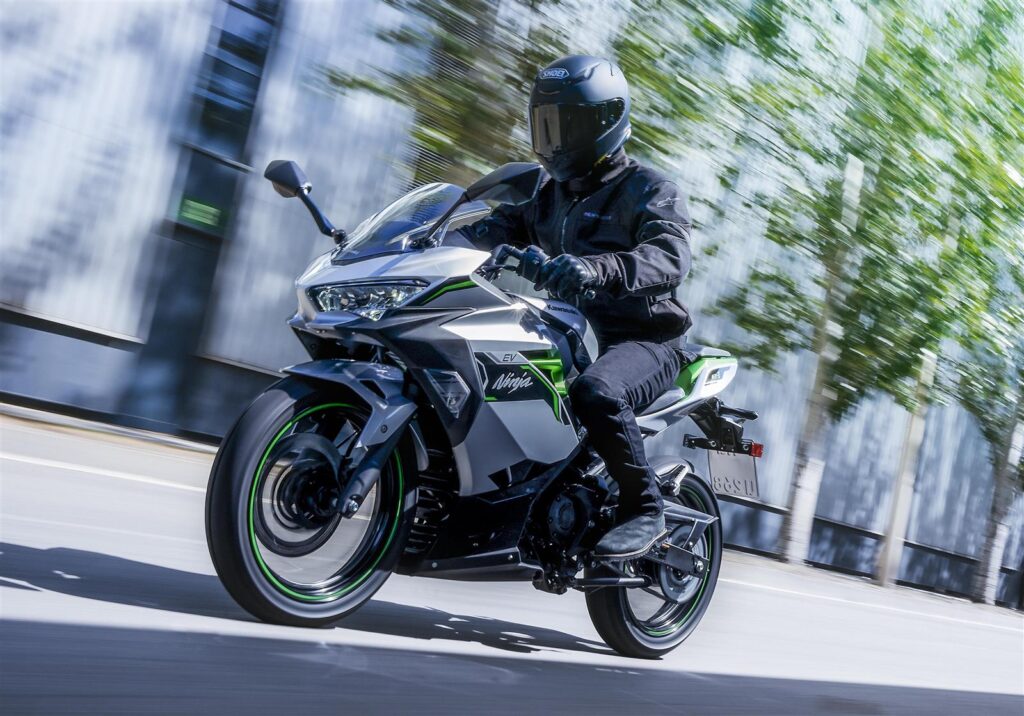
These are two similar models with characteristics similar to those of motorcycles with a medium-displacement combustion engine. The trellis frame is closely derived from that of the Ninja and Z 400. The design of the electric models also reflects that of the Japanese brand's endothermic motorcycles.
Both models have the same powertrain based on an electric motor with 9 kW of peak and 5 kW of continuous power, the torque is 40,5 Nm. Peak power can be obtained for 15 seconds using the e-Boost function that can be activated under the right knob. The powertrain is also made up of two (removable) 50,4 V and 30 Ah (approximately 1,5 kWh) batteries weighing 11,5 kg each, connected in parallel.
Charging can take place from a normal socket in just under four hours. Recharging can be done using a docking station where you can insert the batteries, or via cable, with a socket under the saddle, leaving the batteries installed.
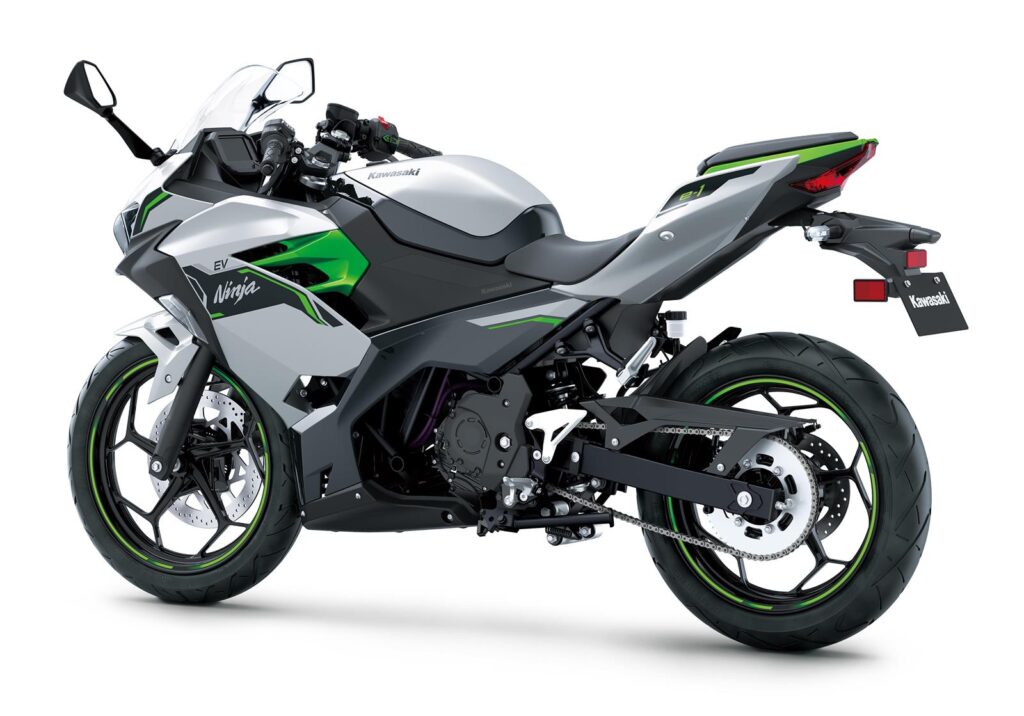
Both feature a 41mm front fork and a gas-charged rear shock with preload adjustment. The braking system consists of 290 mm and 220 mm discs with double-piston callipers. Particular attention was paid to the rear brake, thanks to which the battery is partially recharged, thanks to regenerative braking. The new electric Kawasakis use 100/80 front and 130/70 rear tires. The weight is 140 kg for the Ninja e-1 and 135 kg for the Z e-1e.
The driving modes are Eco and Road, while, to facilitate maneuvering in narrow spaces or uphill, the motorbikes have the Walk mode, set at a maximum of 5 km/h. Depending on the driving mode chosen, the maximum speed reaches up to 99 km/h (limited value). The autonomy is 72 km, indicating the vocation for urban mobility of the two Kawasaki electric models.
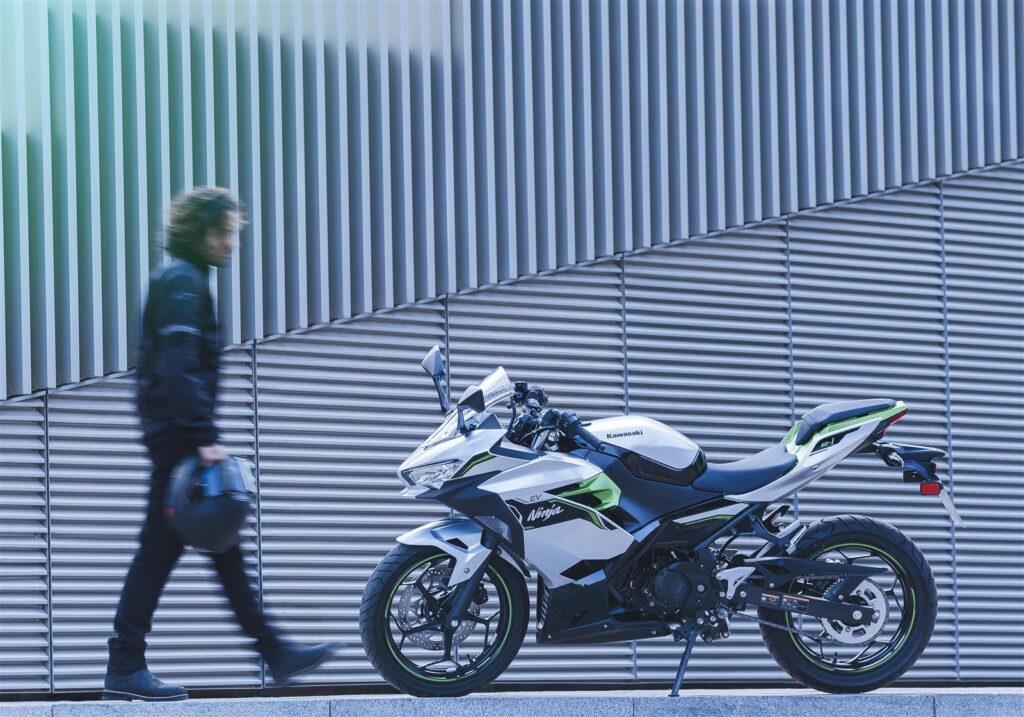
The Kawasaki Ninja e-1 and Z e-1 are available in two versions: Metallic Bright Silver and Metallic Matte Lime Green. The latter will be the characteristic livery of all future Kawasaki electric models. The price has not yet been declared.
Kawasaki previously announced a goal to release at least ten electric or hybrid motorcycles by 2025, as well as continuing to explore other options, maintaining its commitment to internal combustion engines. Among the zero-emission options there are both E-fuels and Bio-fuels as well as hydrogen.

Photos: Kawasaki
To be updated on MotoE World Cup, subscribe to Epaddock's Whatsapp broadcast and receive all our news on your mobile phone in real time: find out how here.



